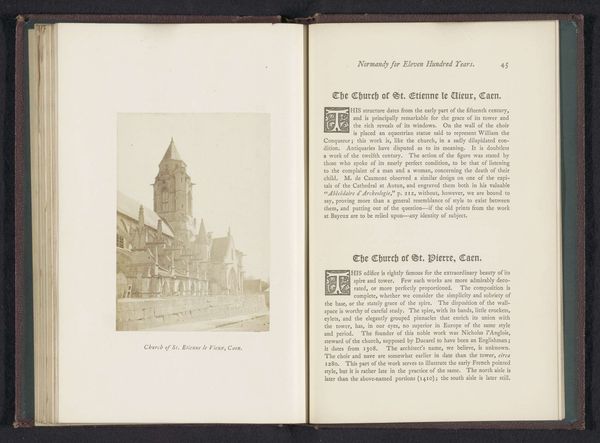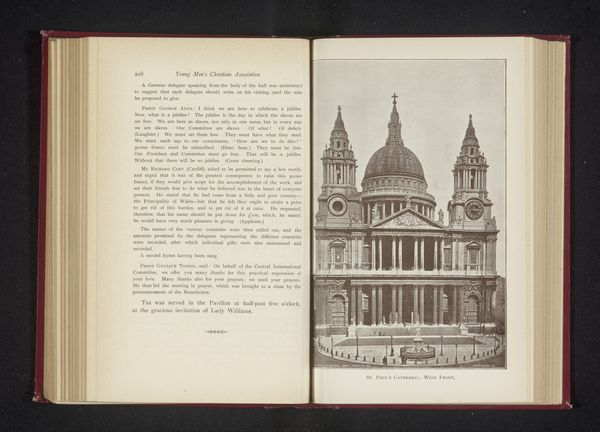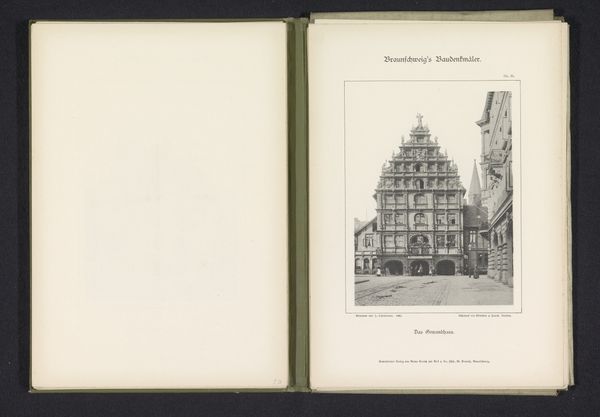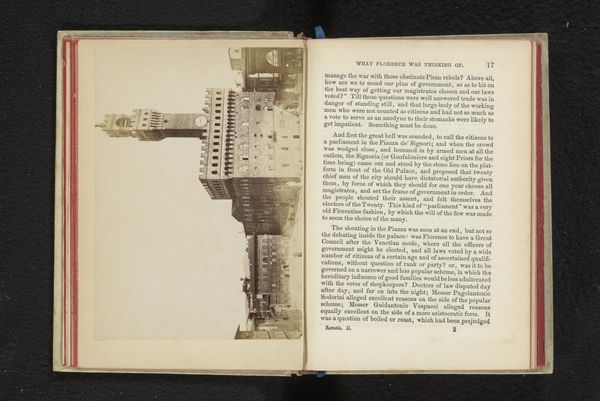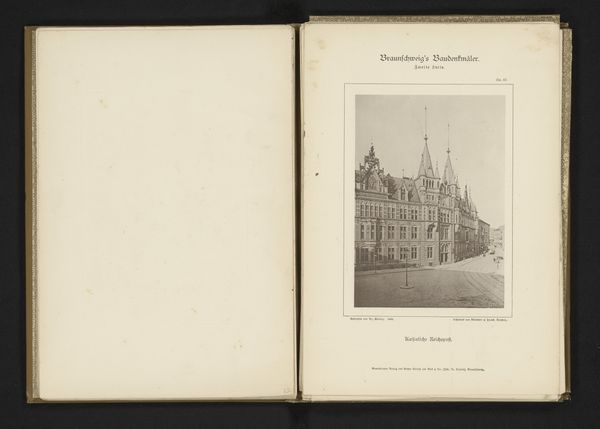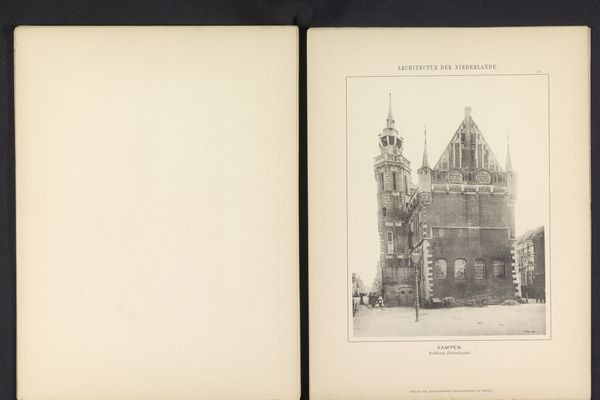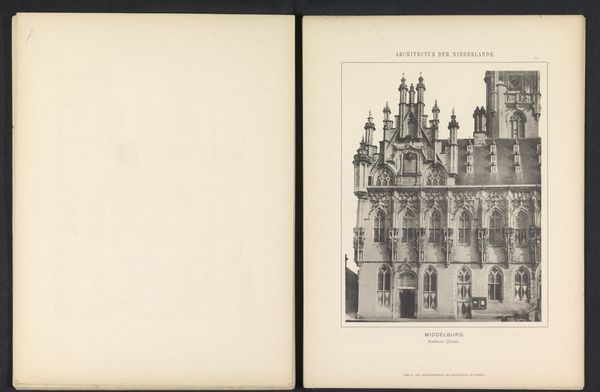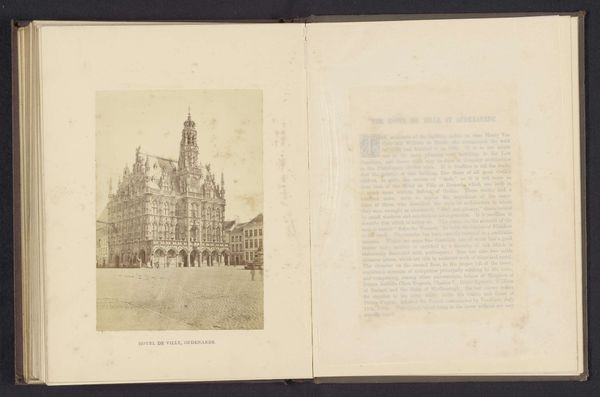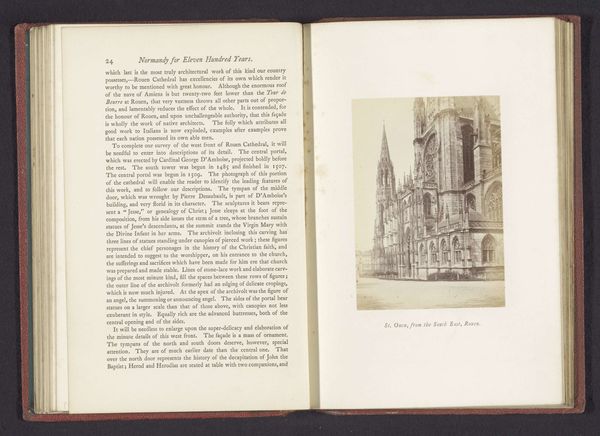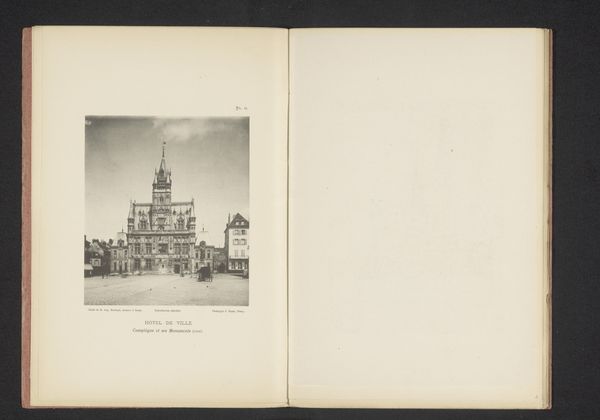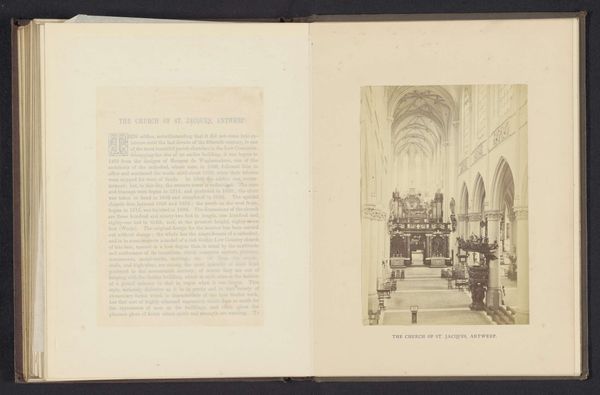
print, paper, engraving, architecture
#
portrait
#
medieval
# print
#
paper
#
cityscape
#
history-painting
#
engraving
#
architecture
Dimensions: height 302 mm, width 201 mm
Copyright: Rijks Museum: Open Domain
Curator: Here we have an engraving, entitled "Gezicht op het stadhuis in Leuven, België," or "View of the Town Hall in Leuven, Belgium," made prior to 1872 by Prosper Morren. It's rendered in delicate detail, showing the ornate facade of the building. Editor: It gives the impression of a meticulously constructed sandcastle, almost impossibly intricate. But there is this immediate feeling of fragility. Curator: Yes, the medium itself, the engraving on paper, speaks to a certain kind of preservation and documentation, popular in the 19th century when photography was still in its relative infancy. Engravings like this were crucial in disseminating architectural images widely. Consider, though, that this image, which emphasizes the history of place through visual data, simultaneously serves a colonizing purpose as European powers spread throughout the globe, mapping everything as they expanded their rule. Editor: Absolutely. It reminds me of the tensions inherent in architectural depictions. While showcasing the beauty and craftsmanship, representations also underscore notions of power, order, and even control. In the same frame, this building represents communal pride, local government, and the solidification of existing social orders. It could even function as propaganda for the authorities or for their sense of achievement in their architecture. Curator: Precisely. The composition further reinforces this idea; it’s very static, almost reverential. Editor: You notice also that there's very little human presence around it, making this feel monumental but strangely abandoned at the same time. What is emphasized then? The building, the process of art-making, the document or its symbolic function? Curator: An interesting point! The architecture is emphasized to highlight civic progress, knowledge of history and heraldry. And the image, as a form of popular documentary available at the time, shows this new monument that could function in the daily life of its inhabitants. It seems that way, and yet all its function as art cannot fill in its role in contemporary public life either, for good or for ill. Editor: This image urges us to reconsider what "progress" and "the public" truly mean when viewed through an inclusive, historically-conscious lens. I walk away feeling as though images of buildings are always loaded. Curator: A valuable takeaway. Perhaps by recognizing art and politics this way, we may better appreciate and decode its many layers.
Comments
No comments
Be the first to comment and join the conversation on the ultimate creative platform.
